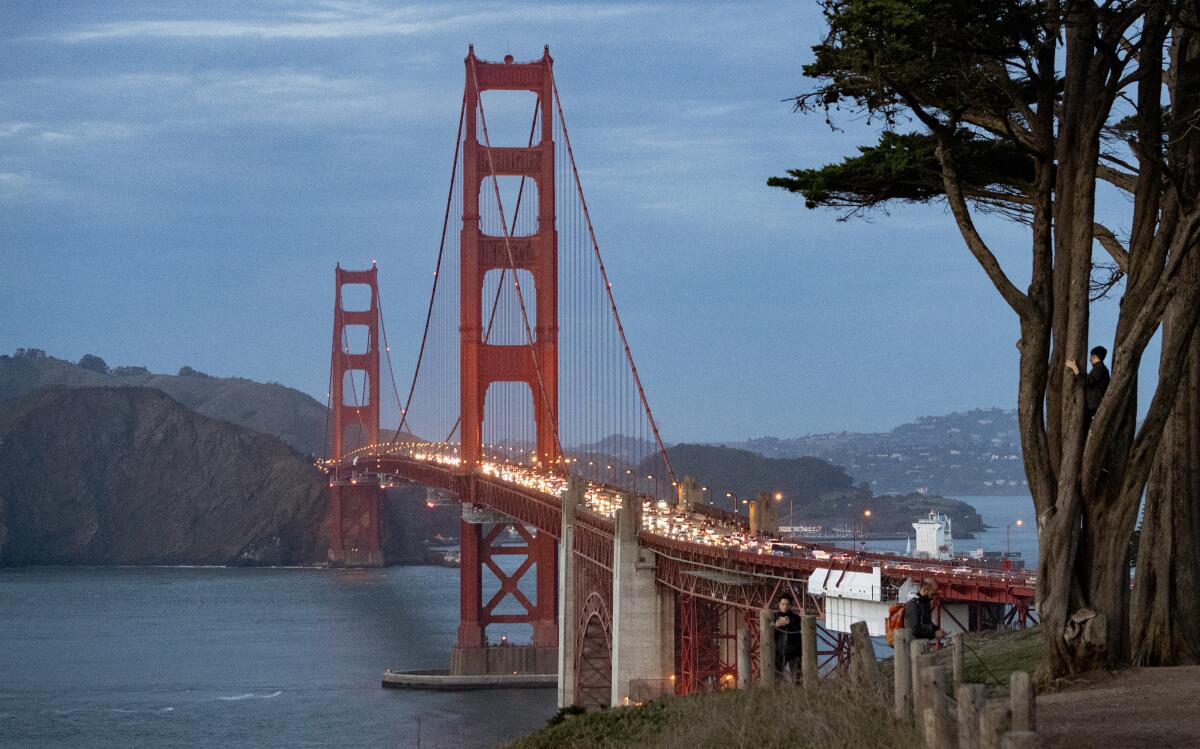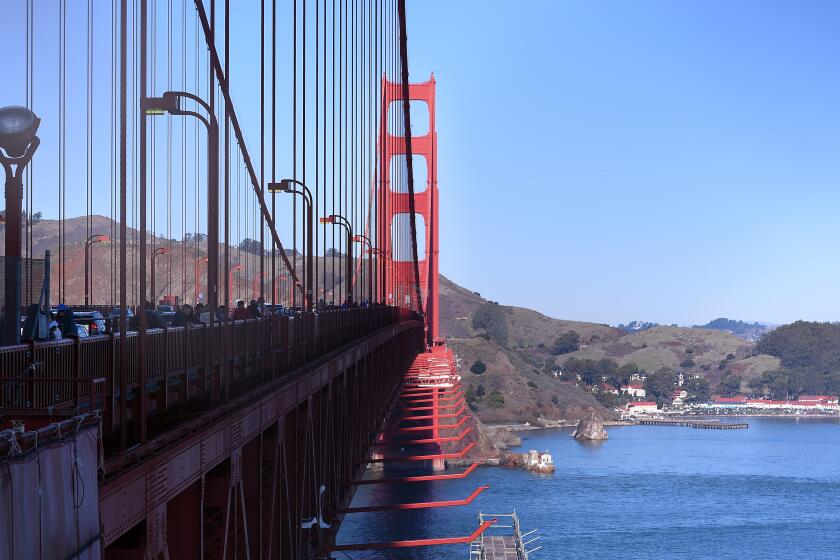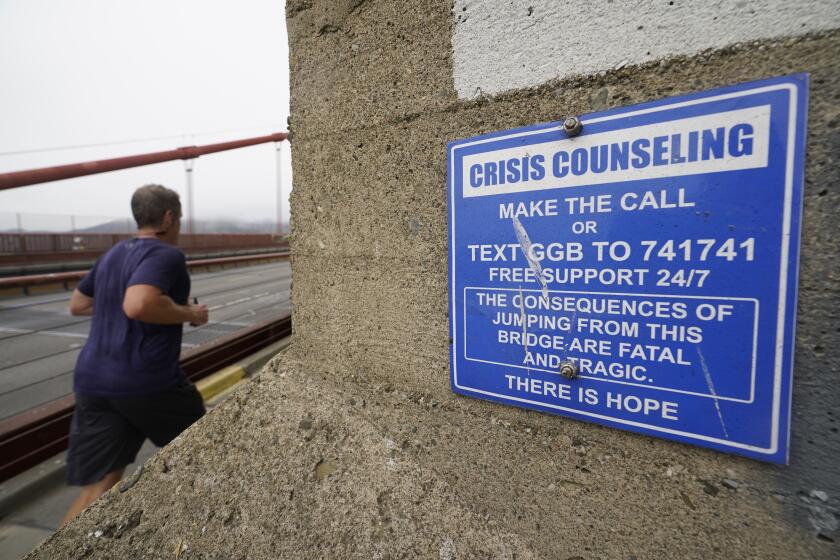A new campaign to save people who jump from Golden Gate Bridge

- Share via
As construction continues on attaching a steel web underneath San Francisco’s Golden Gate Bridge to help prevent suicides, first responders will now be able to practice saving people who jump onto the net.
On Friday, the Golden Gate Bridge, Highway and Transportation District approved an $824,000 project to construct a rescue training net at the Southern Marin Fire District facility in Mill Valley.
The construction of a suicide prevention net at the Golden Gate Bridge was first approved in 2014 with a set completion date of 2021, but the project is two years behind schedule because of staff turnover and changes with the lead contractor, according to district general manager Denis Mulligan. The net is now slated to be completed in November 2023, after the construction company was bought and sold twice.
As engineers work around the clock to complete a net to prevent suicides at the Golden Gate Bridge, we look at the history and what’s at stake.
Costs have also increased, from the project’s original $76-million budget to about $215 million, Mulligan said, because costs have gone up since the project was first envisioned.
“The cost escalation was a culmination of things cost more tomorrow than they do today, and the original estimate underestimated the complexity of building something underneath the bridge,” he said.

Since it opened in 1937, more than 1,800 people have plunged to their deaths from the iconic bridge, the most from any bridge in the United States, according to bridge officials. Over the years, families of victims and psychiatrists working with the nonprofit Bridge Rail Foundation have advocated for lifesaving modifications to be made to the bridge.
In 2021, 223 people came to the bridge to try to hurt themselves, according to Mulligan. Of those, 198 were stopped and 25 people jumped. In 2020, numbers were similar, with 213 coming to the bridge, 185 being stopped and 28 who jumped.
There’s a new three-digit phone number for you to remember: 988. It’s a free suicide prevention hotline for anyone to use, and it couldn’t come soon enough.
On average, first responders, patrol officers, law enforcement and the U.S. Coast Guard have saved 30 lives a year, Mulligan said.
“There’s no more noble task than saving lives and construction is expensive, but to be able to save 30 lives per year ... it’s 30 families, 30 groups of friends that won’t be left adrift struggling with the loss of people who they love,” he said.

The new training facility, which will be constructed at the Southern Marin Fire Protection District’s existing training tower, will include a replica of the net and be used by all first responders.
Tom Welch, deputy chief of training and operations for the Southern Marin Fire Protection District, said their firefighters are well-trained in technical rescue and will eventually take the skills they develop at the training facility to practice full-scale drills at the bridge.
Welch also said he’s heard from officials in Ithaca, N.Y., where suicide prevention nets have been installed, that not many people have been jumping onto the nets.
“Anybody who is thinking and taking action to end their life is not thinking rationally and needs help and we want to deter that and get them the help that they need,” he added.
Suicide prevention and crisis counseling resources
If you or someone you know is struggling with suicidal thoughts, seek help from a professional and call 9-8-8. The United States’ first nationwide three-digit mental health crisis hotline 988 will connect callers with trained mental health counselors. Text “HOME” to 741741 in the U.S. and Canada to reach the Crisis Text Line.
Mulligan said when a net is installed, it’s nearly 100% effective in preventing people from leaping to their deaths.
“Generally people stop jumping at those locations,” he said. “Just a couple people jump into the net, but it’s important to train for the worst.”
Although the number of suicides has remained stable over the years, more and more people have been showing up at the bridge to hurt themselves, according to Mulligan. The demographics of bridge jumpers have also skewed younger in recent years.
“For young people between 16 and 24, suicide was the third-leading cause of death 15 years ago. Now, it’s the second-leading cause of death,” Mulligan said. “Suicide is something we don’t talk about much in our society and issues at the bridge mirror broader society in many ways. It’s tragic if a young person has a bad day or if they’re dealing with a breakup and they take a step they can’t come back from.”
Mental health news and resources to help you cope with the stress of daily life, anxiety and more.
More to Read
Sign up for Essential California
The most important California stories and recommendations in your inbox every morning.
You may occasionally receive promotional content from the Los Angeles Times.

















